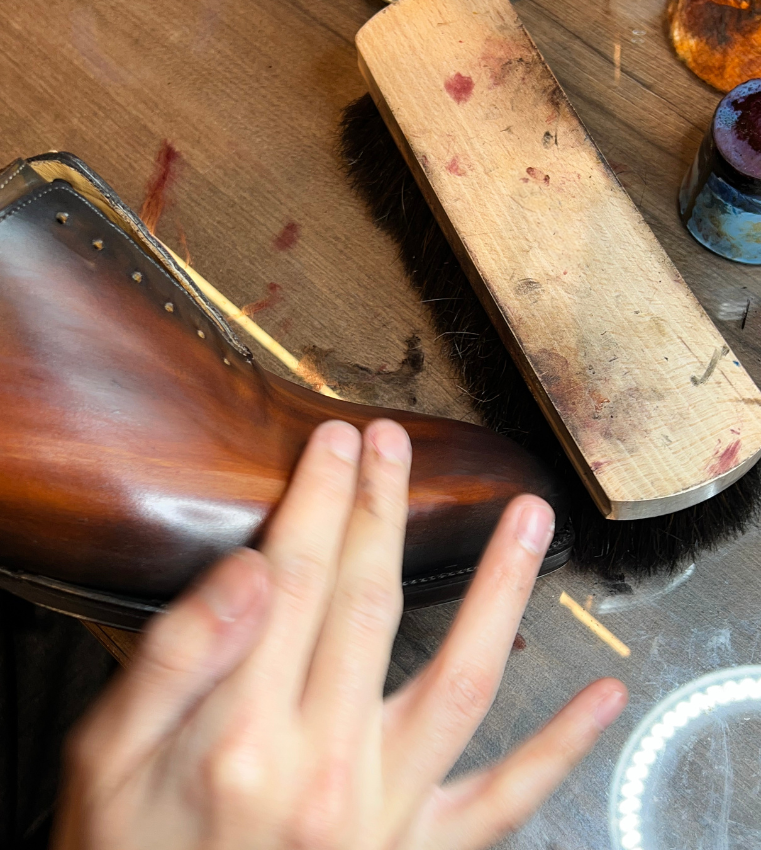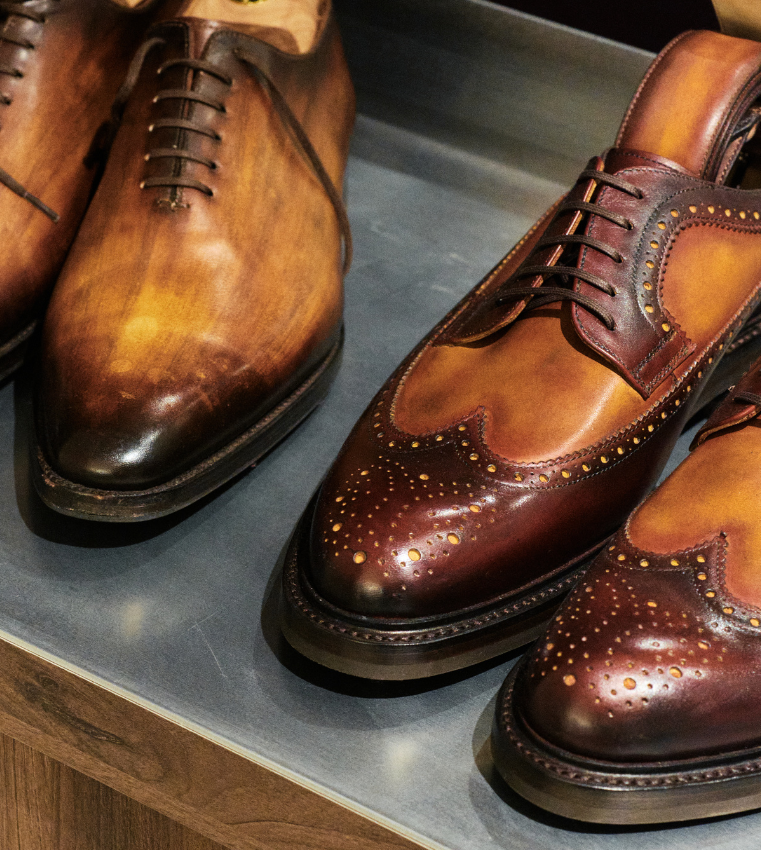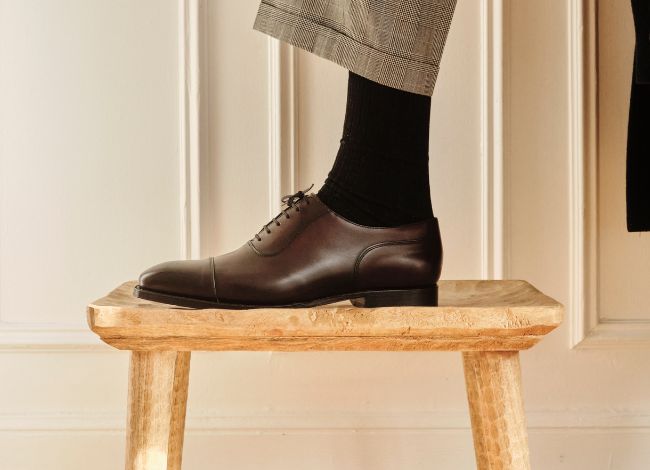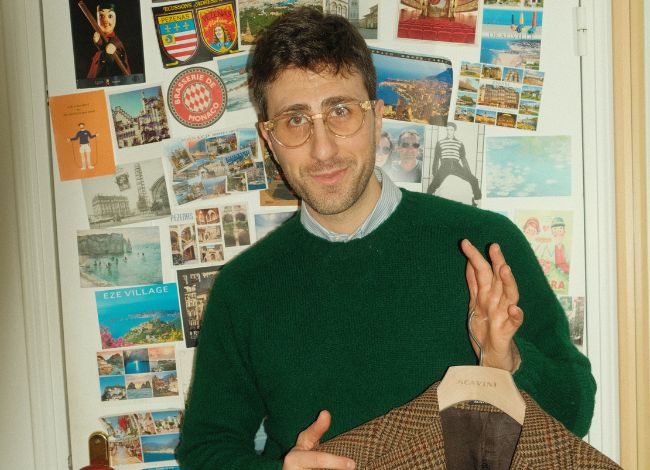When looking for a quality shoe, it is important to recognize the markers that make the difference. If they say the devil is in the details, so is quality.
Summary

Whether it is the leather (I), the assembly (II) or the different components of a shoe (III), let's explore these indicators together to help you make informed choices and invest in shoes that will last time by your side.
THE LEATHER
While animal leather generally pits itself against synthetic and fabric when it comes to durability, the shorthand that a leather shoe is necessarily quality doesn't always hold true. The leather market is very large, and not all skins are equal. The leather is in fact a first indicator of quality and it is therefore important to ensure that it is noble to make it a determining element in the value of the shoe. How can you recognize quality leather goods?
TANNERIES, A GUARANTEE VECTOR
The tanneries, from which the skins come, are a primary vector of guarantee. Some of them are world-renowned and have traditional expertise which results from the transmission of know-how from generation to generation.
At 7L, we have chosen to only work with European Houses for their heritage, such as Weinheimer Leder (Germany), Stead (England), du Puy (France) and Biessuno (Italy).
These tanneries have a long history in the leather industry and carefully select hides taking into account numerous criteria: age of the animal, grain, thickness of the hide, but also origin of the animal.
Careful attention is also given to the tanning process. They are indeed subject to numerous strict European standards, which push them to combine innovation and tradition to produce quality leather that respects the environment and health. Many tanneries outside the EU produce more or less dangerous leather due to the products used during tanning.



However, if the tannery is a marker of quality, it is not everything. In fact, they offer different qualities of leather, divided into categories A, B and C, from the most to the least qualitative. Faced with these practices faced by independent Houses and other private labels , it may be preferable to choose a lesser-known European tannery but which will offer an A category rather than settling for a B or C choice of a tannery with more fame.
Between origin, tanneries and categories of leather, everything is not that simple. So let's take a look at the intrinsic characteristics of the skin such as smell, feel and appearance to ensure its nobility.
THE APPEARANCE OF LEATHER
Recognizing quality leather by its smell is not so simple. First of all, each type of leather from different animal species does not give off the same smell. Cordovan leather has a much stronger smell than calfskin, yet these two skins can be just as good. Conversely, rectified leather will not smell as strong as full grain leather.
The simplest way to attest to the nobility of leather is by observation and touch. First of all, remember that leather comes from an animal. It therefore presents an irregular grain.
Contrary to what one might think, these small imperfections and visible pores are actually a guarantee of quality. A leather that is too smooth without any imperfections, perhaps a rectified leather, presenting a lower quality.

Let's take a look at the difference between full grain leather and rectified leather . The first is made from the top layer of the animal's skin. Its main exterior surface is preserved, which explains the presence of these imperfections. The second is leather that goes through a grinding process in order to erase its imperfections.
No doubt, full grain leather is much more durable than rectified or even bookbinded leather.
To know
Although we only feature full grain leather throughout our collection, we have made an exception, opting for bookbinded leather on the Ivy moccasin .
This type of leather indeed has advantages that should not be overlooked. The shoe has a uniform and elegant appearance. It is also a perfect leather to wear on rainy days. To conclude, it is important to choose your leather based on the use of your shoe as well.
Focus on full grain leather
ANILINE FINISH
The aniline finish is a very high-end finish. The leather is made from quality skins, which are enveloped in an oily and colorless solution which will oxidize on contact with air, to give a fine resin which deeply nourishes the skin. The surface retains its natural state but is protected by a film. These are leathers that have a rougher appearance, but they are also a little more fragile and sensitive to shock.
FULL GRAIN LEATHER WITH PIGMENTED FINISH
Full grain leather with pigmented finish is a finish which retains the full thickness of the skin. A varnishing solution tinted with pigments is applied to opacify the surface in order to hide certain defects. The appearance of leather is a little less natural but it is easier to maintain and gains in resistance. This choice of leather can be relevant in the context of more robust winter ankle boots.
SEMI-ANILINE FINISH
The semi-aniline finish uses the same oily solution, but this time with pigments which lightly tint the skin. The protection is reinforced but the appearance of the leather is a little less natural, the original surface being slightly covered. This finish remains one of the most qualitative on the market and the most used in the world of high-end shoes. In the tannery finishing process, this leather is "crushed", we then speak of Boxcalf.
CORRECTED FULL-GRAIN LEATHER WITH PIGMENTED FINISH
Corrected full grain leather with pigmented finish is a finish where light sanding removes the original defects in the leather. A pigmented solution is also applied, in a more opaque manner, making the natural appearance of the leather disappear. Its strength and elasticity have also decreased slightly. The leather now has a printed artificial grain or a smooth finishing layer which may fade over time, making maintenance easier.
It is typically a bookbinded leather.
Mounting
If leather is the primary marker of quality of a shoe, we must not neglect the assembly of the shoe. This step in the design of a shoe, which aims to secure the sole to the rest of the shoe, will determine its longevity. Each assembly presents its qualities, the most important being the know-how put into each of them.
We have already produced an article on the different types of montages , it is not a question here of exposing again all the existing montages. Let us mainly return to the distinction between two main families of assemblies: sewn and welded .
Welded assembly, also called glued, does not require sewing. It consists of directly mounting the upper on the insole using a water-insoluble glue. Even though progress has been made on welded assemblies, it does not offer the same resistance as a sewn assembly.
It can nevertheless be interesting on light shoes or sneakers, but we advise you to always favor a sewn construction for dress shoes. And all the more so since a sewn assembly will allow you to resole your shoes, thus increasing their longevity.

The different arrangements
Among the diversity of existing assemblies, the Goodyear assembly allows waterproofing and solidity thanks to its additional seam, which also offers the possibility of resoling. These characteristics are also shared with the Norwegian assembly. The Blake assembly, on the other hand, is more flexible, a quality which has other advantages such as comfort.
In reality each assembly has its advantages, one will not necessarily be better than the other. Find all the advantages and disadvantages of the different types of mounting in our article The different types of mounting .
THE SEAMS
Let's now focus on the seams , a major element of assembly. This is a detail to carefully examine because the seams will have an impact on the lifespan of your shoes. Poor quality sewing may not hold up, so don't neglect this detail.
The stitches should be neat and tight. To recognize strong seams, there’s no secret, you have to observe them. The first thing to check is the distance between the points. (More or less) regular and tight seams are a sign of a quality shoe.
At 7L, we are proud to offer more than 5 stitches per centimeter on the upper seams as well as 4 stitches per centimeter on a petit point seam for example.


Please note, above we told you about the fact that leather, even of the best quality, can have imperfections, since it comes from the animal. Well in the same way, even excellent quality seams can have some irregularities when they are done by hand. Manual work visually may not be as perfect as that produced by machines. Don't stop at small irregularities which are proof of craftsmanship.
THE COMPONENTS OF A SHOE
A shoe is made up of several parts, all of which are important. Each of these components must be of quality so that the finished product is as well.
THE DOUBLE WOOD DOWN
The double wooden doweling that we use is an additional element in the quality of a shoe. Aesthetically speaking, you won't see any difference since it is hidden, but it is important.
This method consists of making the outer sole fit the metal shank using wooden nails and giving relief. This allows the shank to stay in place and helps maintain the arch of the foot. This technique is only used for leather soles; it would have no benefit on a rubber sole.

THE HEEL BLOCK
Heel work is also important. Our heel blocks are constructed from layers of leather . In fact, thin layers of leather are carefully layered and glued together to create the heel of the shoe. The result, a much more solid heel than a hollow heel. Each block thus insulated will also be easier to change over time, making your shoes last longer.
You also need to be careful when it comes to the space between the heel block and the counter . The latter must be as small as possible, a guarantee of a well-made shoe.

THE SOLE UNDER ENGRAVING CLOSED
Beyond the very clean appearance which gives the shoe real elegance, a sole under closed engraving helps protect the sewn sole. When it is made, the groove in which the small stitch seam was made is folded down, which protects the thread and allows it not to be in direct contact with the ground.

BRASS NAILS
We offer 7 brass studs on each leather sole. These finish perfecting the shoe and protect the front of the sole during the first wear. It's a carefully thought-out manufacturing detail, but one that is not intended to remain. It is in fact necessary to replace them subsequently with a built-in iron. We invite you to read our guide to irons and skates to find out more.

LEATHER TRIMMING
This operation consists of removing material by sanding the edges of the yoke, before assembly. The edges having become thinner, this will reduce the relief when superimposed.
Properly done trimming increases the lifespan of shoes and will significantly contribute to their aesthetics. At 7L, we pay great attention to this finish, to offer an impeccably finished shoe.

THE HARD STREET
The hard end should be rigid as its name suggests. This rigidity can vary depending on the type of shoe: sports shoes do not require a hard toe that is too stiff, for example.
However, for city shoes, it is sometimes possible to find hard, flexible tips, particularly for reasons of flexibility and comfort. We believe this is an error. Indeed, this part of the shoe must be resistant to impacts to protect the foot, but also to structure the upper and avoid sagging or deformation of the shoe over time.
THE CURVED SHAPE OF THE SOLE
The outsole should be domed in the middle, that is, it should form a slight arch under the shoe.
This convex shape, in addition to helping with walking, will allow the wear of the sole to be targeted in the middle and thus protect the small stitch seam which goes around it.

CONCLUSION
Shoe making is an artisanal job that requires more than 200 human interventions. You can't expect a finished shoe to be flawless and free of even the slightest imperfection.
Rather than dwelling too long on details, it is better to understand them and recognize the quality markers for shoes that stand the test of time.
Similar articles









